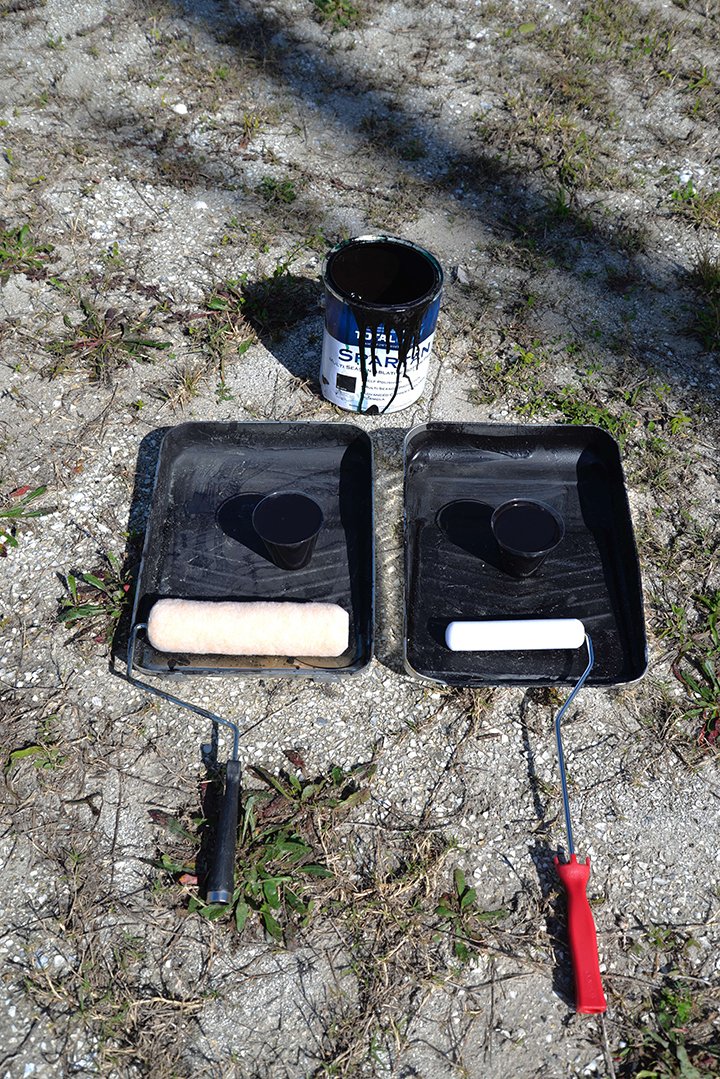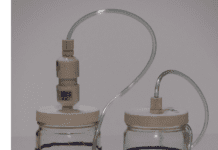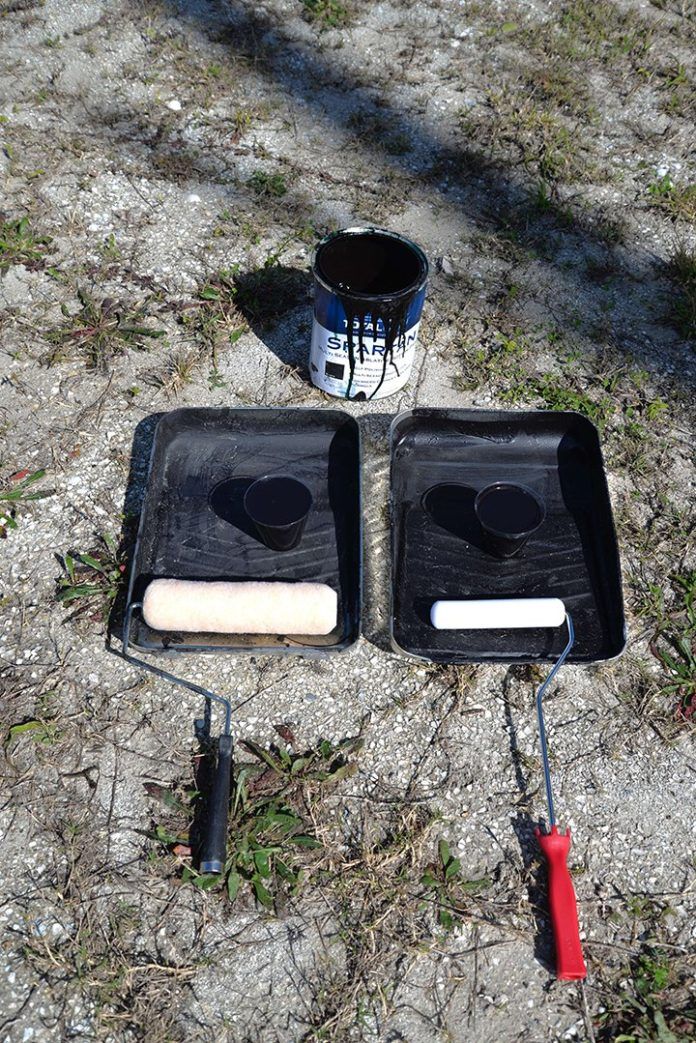Dan Spurr

We had a special visitor down to Sarasota, Florida this week, formerPractical Sailoreditor Dan Spurr was launching his newly purchased boat, a 1977 Pearson 365 namedAugust Westthat he and wife Andra are hoping to enjoy in their retirement. Along with being the longest-running editor ofPractical Sailor(11 years), Spurr is the author of several books, includingSpurr’s Guide to Upgrading the Cruising Sailboat, Heart of Glass, a fascinating account of the early days of fiberglass boatbuilding, andYour First Sailboat, a buying guide to 84 of the more popular used sailboats on the market. He is also an editor at large at Professional Boatbuilder.
Not wanting to miss the opportunity to put Spurr back to work, we enlisted his help in testing Jamestown Distributors bottom paint Total Boat. Introduced fairly recently, Total Boat is manufactured by Bluewater Paints, a perennial contender in our bottom paint test. Dan applied two Total Boat paints to the hull ofAugust West. One was Spartan, a multi-season high-copper (45 percent by weight) ablative paint. The other was Underdog, an economical low-copper (24 percent by weight) ablative paint. Ablative paints, as the name suggests, gradually wear away over time.
Branding its own bottom paint is a smart move for Jamestown. The Rhode Island-based company specializes in boat maintenance products. It has set itself apart from other online retailers with kits that supply boaters with all they need to carry out common projects like waxing a hull or painting a bottom. For its bottom-painting kits, the company supplies a roller cover with a 3/8-inch nap, which is the most commonly recommended size for bottom painting. (The kit also includes paint trays, disposable gloves, thinner, and Tyvek suits for protection.)
The type of roller use is relevant because it can affect coverage, depending upon how it is used. Theoretical paint coverage claims can vary among paints, but most conventional anti-fouling (as opposed to thin-film paints like Interlux VC-17) claim between 300 and 400 square feet of coverage per gallon when roller applied. Following these estimates one should be able to meet the manufacturers recommended thickness, usually about 2 mils dry, or 3-4 mils wet. Most boaters don’t take the time to measure mils using a thickness gauge, they usually just apply the recommended number of coats. (The recommended number of coats for Spartan is 2-3 coats.)
So for most of us, the question remains. Are we laying down coats that are too thick? For the year-round sailor, buying and applying too much ablative paint isn’t a big deal (although, after three coats adhesion can be problematic). The protection should last longer. But for those who haul out every year and repaint, putting too much paint on the hull or paying top dollar for an expensive multi-season paint is a waste of money.
In my own experience, Ive found that I rarely can match the manufacturers coverage estimates using a 3/8-inch nap roller cover, so for theAugust Westproject we decided to do a comparison. Granted, this was not a proper test, just something to fill the time on a windy afternoon when the paint was drying faster than expected. Being a spontaneous notion, we used whatever rollers we had laying around the shop.
One section of the boat was painted with a foam, solvent-resistant hot-dog or sausage roller cover, a technique that, though tedious, has worked for me in the past. Larger diameter solvent-resistant foam rollers which would work faster, are also available (see comments below). The sausage roller, more commonly used for topside finishes, soaks up far less paint than a conventional, 3/8-inch cover.
The adjacent section was painted using a conventional 3/8-inch nap roller. A proper test would be to paint larger sections, or even identical hulls, with each of the rollers-but not having time, nor another Pearson 365 at our disposal, we forged ahead. (This topic will be revisited in greater detail in a future report.)
Obviously, coverage was only part of the equation. We also wanted to see how well each application performed. We will be checking back to see how the paints are doing, and hopefully get some telling photographs when August West is hauled out again.
On two designated test patches, Spurr applied eight ounces of paint with each roller cover, after accounting for pre-soak. The results were striking. Using the conventional 3/8-inch nap, the 8 ounces of paint covered 7 square feet; using the foam sausage-style roller, he was able to apply nearly 17.5 square feet-2.5 times more area. Multiplied out, this yields per gallon coverage (one coat only) of 112 square feet with the 3/8-nap roller and 280 square feet with the sausage roller. Neither comes close to applying the 400 square feet that the manufacturer says we should expect, which suggests that even the thinly applied paint from the sausage roller is too thick. (Perhaps Spurr was applying too much pressure?) Or, more likely, the makers estimates are overly optimistic.
Unfortunately, we did not check mil thickness of each application (this will be a part of our future report), but ultimately what matters is how well each approach performs against barnacles. We assume the area painted with the 3/8-inch nap roller will offer better protection because it has more biocide, but it will be interesting to see the results. Spurr will be hauling out for hurricane season, so we should get a good look in about four months.
The experiment raises a question, is the 3/8-inch nap roller, the ideal choice? Certainly for rough hulls, the thicker nap does cover divots and dings that a shorter nap might miss. And it also requires far less work. But bottom paint is expensive-an ounce can cost more than a gallon of gas-so we hate to see it go to waste. If you have some tips for stretching bottom paint, I’d love to hear them. Comment here, or send me an email at[email protected].
[Editor’s note: This post was edited on 1.20.2016 for clarification, based on comments made prior to that date.]



































In 2021, about to do my first bottom job on my Pearson 365, and I’d really like to hear the follow up on how these different methods held up.
I’m about to do a bottom job in SV Cadence (https://thefosterjourney.blog/) using the conventional 3/8″ roller and hard Pettit Trinidad HD paint. We’ll see how it covers. I’m estimating 3 gallons for a Catalina 387.
How about a comparison of a 1/4″ nap roller against the 3/8″ nap roller? There is an amount of paint that the roller takes up that never get to the boat’s surface.
Also with a 3/8″ nap roller by the time you get to the other side of the boat the nap is pretty flat. Is it worth changing to a new 3/8″ nap roller for the other side of the boat?